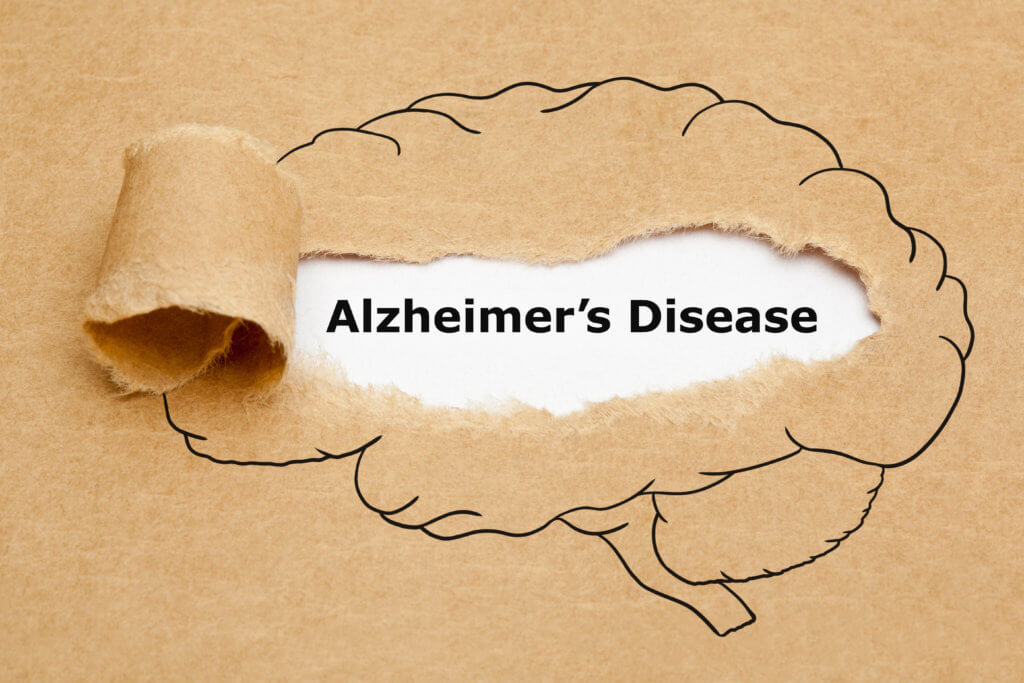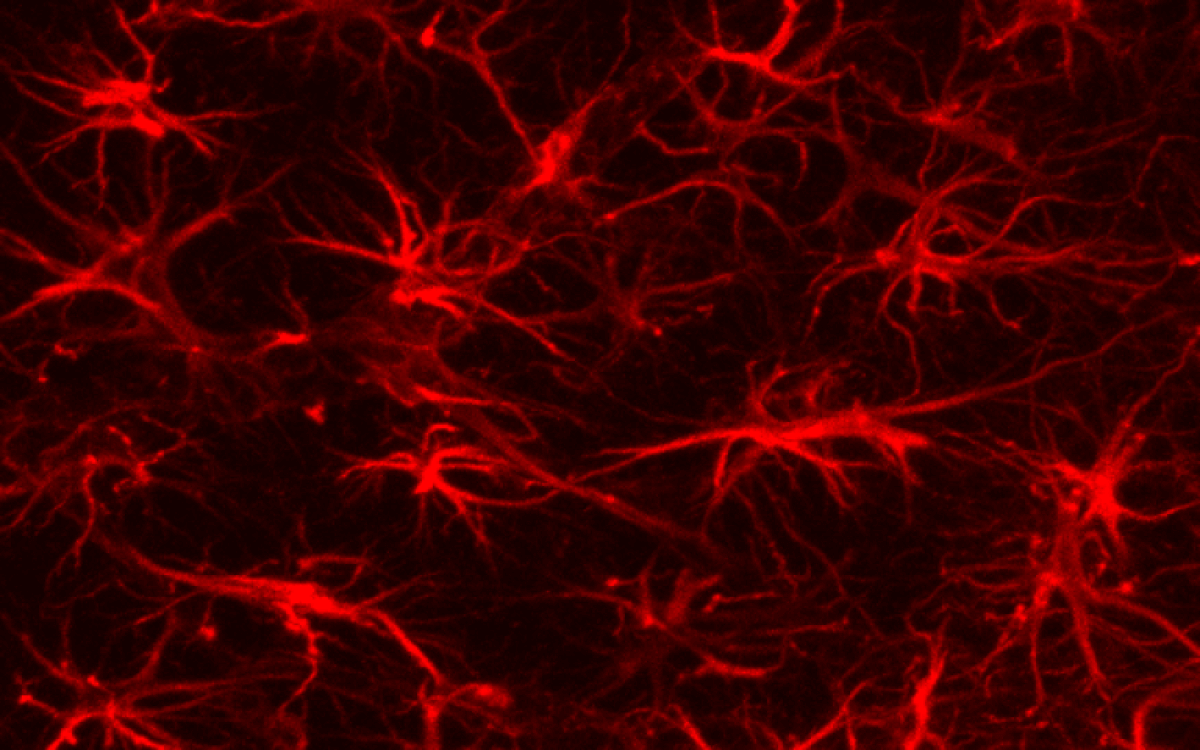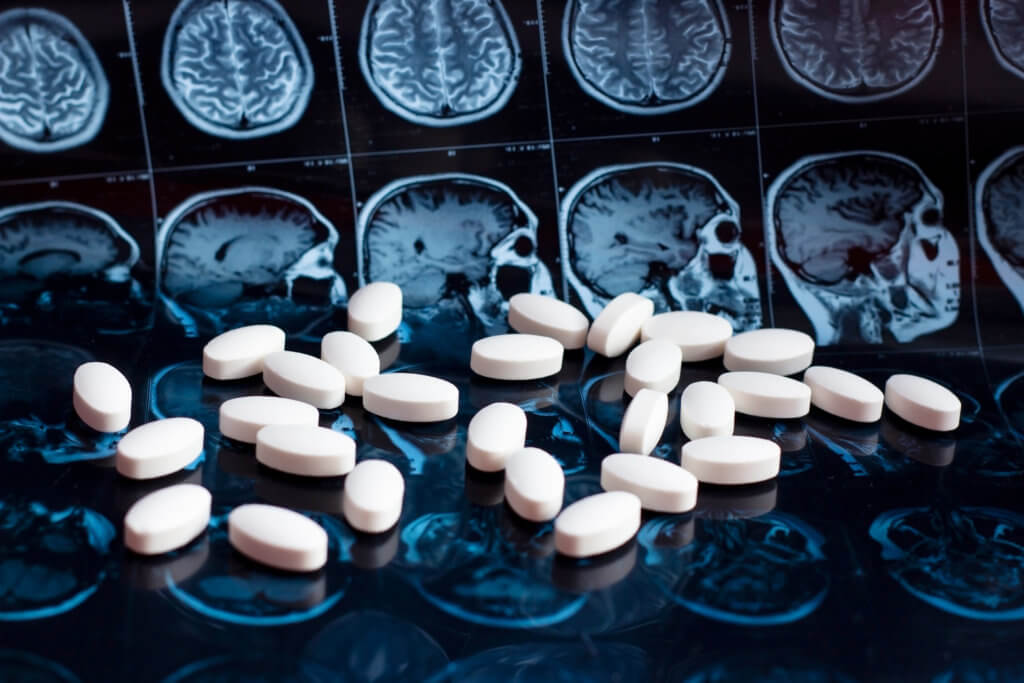The new science of “exposomics” shows how air pollution contributes to Alzheimer’s, Parkinson’s, bipolar disorder and other brain diseases

By 1992, burgeoning population, choking traffic, and explosive industrial growth in Mexico City had caused the United Nations to label it the most polluted urban area in the world. The problem was intensified because the high-altitude metropolis sat in a valley trapping that atmospheric filth in a perpetual toxic haze. Over the next few years, the impact could be seen not just in the blanket of smog overhead but in the city’s dogs, who had become so disoriented that some of them could no longer recognize their human families. In a series of elegant studies, the neuropathologist Lilian Calderón-Garcidueñas compared the brains of canines and children from “Makesicko City,” as the capital had been dubbed, to those from less polluted areas. What she found was terrifying: Exposure to air pollution in childhood decreases brain volume and heightens risk of several dreaded brain diseases, including Parkinson’s and Alzheimer’s, as an adult.
Calderón-Garcidueñas, today head of the Environmental Neuroprevention Laboratory at the University of Montana, points out that the damaged brains she documented through neuroimaging in young dogs and humans aren’t just significant in later years; they play out in impaired memory and lower intelligence scores throughout life. Other studies have found that air pollution exposure later in childhood alters neural circuitry throughout the brain, potentially affecting executive function, including abilities like decision-making and focus, and raising the risk of psychiatric disorders.
The stakes for all of us are enormous. In places like China, India, and the rest of the global south, air pollution, both indoor and outdoor, has steadily soared over the course of decades. According to the United Nations Foundation, “nearly half of the world’s population breathes toxic air each day, including more than 90 percent of children.” Some 2.3 billion people worldwide rely on solid fuels and open fires for cooking, the Foundation adds, making the problem far worse. The World Health Organization calculates about 3 million premature deaths, mostly in women and children, result from air pollution created by such cooking each year.
In the United States, meanwhile, average air pollution levels have decreased significantly since the passage of the Clean Air Act in 1970. But the key word is average. Millions of Americans are still breathing outdoor air loaded with inflammation-triggering ozone and fine particulate matter. These particles, known as PM2.5 (particles less than 2.5 micrometers in diameter), can affect the lungs and heart and are strongly associated with brain damage. Wildfires—like the ones that raged across Canada this past summer—are a major contributor of PM2.5. A recent study showed that pesticides, paints, cleaners, and other personal care products are another major—and under-recognized—source of PM2.5 and can raise the risk for numerous health problems, including brain-damaging strokes.
Untangling the relationship between air pollution and the brain is complex. In the modern industrial world, we are all exposed to literally thousands of contaminants. And not every person exposed to a given pollutant will develop the same set of symptoms, impairments, or diseases—in part because of their genes, and in part because each exposure may occur at a different point in development or impact a different area of the body or brain. What’s more, social disparities are at play: Poorer populations almost always live closer to factories, toxins, and pollutants.
The effort to figure it out and intervene has sparked a new field of study: exposomics, the science of environmental exposures and their effects on health, disease, and development. Exposomics draws on enormous datasets about the distribution of environmental toxins, genetic and cellular responses, and human behavioral patterns. There is a huge amount of information to parse, so researchers in the field are turning to another emerging science, artificial intelligence, to make sense of it all.
“Anything from our external environment—the air we breathe, food we eat, the water we drink, the emotional stress that we face every day—all of that gets translated into our biology,” says Rosalind Wright, professor of pediatrics and co-director of the Institute for Exposomic Research at the Icahn School of Medicine at Mount Sinai in New York. “All these things plus genes themselves explain the patterns of risk we see.” When an exposure is constant and cumulative, or when it overwhelms our ability to adapt, or “when you’re a fetus in utero, when you’re an infant or in early childhood or in a critical period of growth,” it can have a particularly powerful effect on lifelong cognitive clarity and brain health.
Related Stories
- Human Brains May Be Getting BiggerDIANA KWON
- Hollywood Should Give Brain Science a Star TurnDEENA WEISBERG & MARC COUTANCHE
- Scientists Discover Extensive Brain-Wave PatternsSIMON MAKIN
- Turning Down the Noise Around You Improves Health in Many WaysJOANNE SILBERNER
Neuroscientist Megan Herting at the University of Southern California (USC) has been studying the impact of air pollution on the developing brain. “Over the past few years, we have found that higher levels of PM2.5 exposure are linked to a number of differences in the shape, neural architecture, and functional organization of the developing brain, including altered patterns of cortical thickness and differences in the microstructure of gray and white matter,” she says. On the basis of neuroimaging of exposed youngsters, Herting and fellow researchers suspect the widespread differences in brain structure and function linked with air pollution may be early biomarkers for cognitive and emotional problems emerging later in life.
That suspicion gains support from an international meta-analysis (a study of other studies) published in 2023 that correlated exposure to air pollution during critical periods of brain development in childhood and adolescence to risk of depression and suicidal behavior. The imaging parts of the studies showed changes in brain structure, including neurocircuitry potentially involved in movement disorders like Parkinson’s, and white matter of the prefrontal lobes, responsible for executive decision-making, attention, and self-control.
In a 2023 study, Herting and colleagues tracked children transitioning into adolescence, when brains are in a sensitive period of development and thus especially vulnerable to long-term damage from toxins. Among brain regions developing during this period is the prefrontal cortex, which helps with cognitive control, self-regulation, decision-making, attention, and problem-solving, Herting says. “Your emotional reward systems are also still being refined,” she adds.
Looking at scan data from more than 9,000 youngsters exposed to air pollution between ages 9 and 10 and following them over the next couple of years, the researchers found changes in connectivity between brain regions, with some regions having fewer connections and others having more connections than normal. Herting explains that these structural and functional connections allow us to function in our daily lives, but how or even whether the changes in circuitry have an impact, researchers do not yet know.
The specific pollutants involved in the atypical brain circuits appear to be nitrogen dioxide, ozone, and PM2.5—the small particles that worry many researchers the most. Herting explains: Limits set on fine particulate matter are stricter in the United States than in most other countries but still inadequate. The U.S. Environmental Protection Agency currently limits annual average levels of the pollutant to 12 micrograms per cubic meter and permits daily spikes of up to 35 micrograms per cubic meter. Health organizations, on the other hand, have called for the agency to lower levels to 8 micrograms and 25 micrograms per cubic meter, respectively. Thus, even though it may be “safe” by EPA standards, “air quality across America is contributing to changes in brain networks during critical periods of childhood,” Herting says. And that may augur “increased risk for cognitive and emotional problems later in life.” She plans to follow her group of young people into adulthood, when advances in science and the passage of time should reveal more about the effect of air pollution exposure during adolescence.
Other research shows that air pollution increases risk of psychiatric disorder as years go by. In work based on large datasets in the United States and Denmark, University of Chicago computational biologist Andrey Rzhetsky and colleagues found that bad air quality was associated with increased rates of bipolar disorder and depression in both countries, especially when exposure occurs early in life. Rzhetsky and his team used two major sources: in Denmark, the National Health Registry, which contains health data on every citizen from cradle to grave; and in the United States, insurance claims with medical history plus details such as county of residence, age, sex, and importantly, linkages to family—specifics that helped reveal genetic predisposition to develop a psychiatric condition during the first 10 years of life.
“It’s possible that the same environment will cause disease in one person but not in another because of predisposing genetic variants that are different in different people,” Rzhetsky says. “The different genetic predisposition, that’s one part of the puzzle. Another part is varying environment.”
Indeed, these complex diseases are spreading much faster than genetics alone seems to explain. “We definitely don’t know for sure which pollutant is causal. We can’t really pinpoint a smoking gun,” Rzhetsky says. But one pesky culprit continues to prove statistically significant: “It looks like PM2.5 is one of those strong signals.” To figure it out specifically, we’ll need much more data, and exposomics will play a vital role.
Sign Up for Our Daily Newsletter
Email AddressBy giving us your email, you are agreeing to receive the Today In Science newsletter and to our Terms of Use and Privacy Policy.Sign Up
Thank you for signing up!
Check out our other newsletters
“This is a wake-up call,” Frances Jensen told her fellow physicians at the American Neurological Society’s symposium on Neurologic Dark Matter in October 2022. The meeting was an exploration of the exposome –the sum of external factors that a person is exposed to during a lifetime— driving neurodegenerative disease. It was focused in no small part on air pollution. Jensen, a University of Pennsylvania neurologist and president of the American Neurological Association, argued that researchers need to pay more attention to contaminants because the sharp rise in the number of Parkinson’s diagnoses cannot be explained by the aging population alone. “Environmental exposures are lurking in the background, and they’re rising,” she said.
Parkinson’s disease is already the second-most common neurodegenerative disease after Alzheimer’s. Symptoms, which can include uncontrolled movements, difficulty with balance, and memory problems, generally develop in people age 60 and older, but they can occur, though rarely, in people as young as 20. Could something in the air explain the increasing worldwide prevalence of Parkinson’s? Researchers have not identified one specific cause, but they know Parkinson’s symptoms result from degeneration of nerve cells in the substantia nigra, the part of the brain that produces dopamine and other signal-transmitting chemicals necessary for movement and coordination.
A host of air pollution suspects are now thought to play a role in the loss of dopamine-producing cells, according to Emory University environmental health scientist W. Michael Caudle, who uses mass spectrometry to identify chemicals in our bodies. One suspect he’s looking at are lipopolysaccharides, compounds often found in air pollution and bacterial toxins. Although lipopolysaccharides cannot directly enter the brain, they inflame the liver. The liver then releases inflammatory molecules into the bloodstream, which interact with blood vessels in the blood-barrier. “Then the inflammatory response in the brain leads to loss of dopamine neurons, like that seen in Parkinson’s disease,” Caudle says.
More evidence comes from neuroepidemiologist Brittany Krzyzanowski, based at the Barrow Neurological Institute in Phoenix. Krzyzanowski had an “aha!” moment when she saw a map highlighting the high risk of Parkinson’s disease in the Mississippi–Ohio River Valley, including areas of Tennessee and Kentucky. At first she wondered whether the Parkinson’s hotspot was due to pesticide use in the region. But then it hit her: The area also had a network of high-density roads, suggesting that air pollution could be involved. “The pollution in these areas may contain more combustion particles from traffic and heavy metals from manufacturing, which have been linked to cell death in the part of the brain involved in Parkinson’s disease,” she said.
In a study published in Neurology in October 2023, Krzyzanowski and colleagues, using sophisticated geospatial analytic techniques, went on to show that those with median levels of air pollution have a 56 percent greater risk of developing Parkinson’s disease compared to those living in regions with the lowest level of air pollution. Along with the Mississippi-Ohio River Valley, other hotspots included central North Dakota, parts of Texas, Kansas, eastern Michigan, and the tip of Florida. People living in the western half of the U.S. are at a reduced risk of developing Parkinson’s disease compared with the rest of the nation.
As to the hotspot in the Mississippi-Ohio River Valley, Parkinson’s there is 25% higher than in areas with the lowest air particulate matter. Aside from that, Krzyzanowski and her research team noted something especially odd: Frequency of the disease rose with the level of pollution, but then it plateaued even as air pollution continued to soar. One reason could be that other air pollution-linked diseases, including Alzheimer’s, are masking the emergence of Parkinson’s; another reason could be an unusual form of PM2.5. “Regional differences in Parkinson’s disease might reflect regional differences in the composition of the particulate matter, and some areas may have particulate matter containing more toxic components compared to other areas,” Krzyzanowsk says. Tapping the tenets of exposomics, she expects to explore these issues in the months and years ahead.
The hunt is on for the connections between environmental factors and Alzheimer’s as well. USC neurogerontologist Caleb Finch has spent years studying dementia, especially Alzheimer’s disease, which affects more than six million Americans. As with Parkinson’s, Alzheimer’s numbers are rising in the United State and much of the world. Degenerative changes in neurons become increasingly frequent after the age of 60, yet half of the people who make it to 100 will not get dementia. Many factors could explain those discrepancies. Air pollution may be an important one, Finch says.
Researchers like Finch and his USC colleague Jiu-Chiuan Chen are joining forces to explore the connections between environmental neurotoxins and decline in brain health. It’s a challenging project, since air pollution levels and specific pollutants vary on fine scales and can change from hour to hour in many areas of the globe. On the basis of brain scans of hundreds of people over a range of geographic areas, this much we know: “People living in areas of high levels of air pollution and who have been studied on three continents showed accelerated arterial disease, heart attacks, and strokes, and faster cognitive decline,” Finch says.
Not everyone reacts the same way when exposed to pollutants, of course. Greatest risk for Alzheimer’s seems to hit people who have a genetic variant known as apolipoprotein E (APOE4), which is involved in making proteins that help carry cholesterol and other types of fat in the bloodstream. About 25 percent of people have one copy of that gene, and 2 to 3 percent carry two copies. But inheriting the gene alone doesn’t determine a person’s Alzheimer’s risk. Environmental exposures count too.
A recent study by Chen, Finch, and colleagues published in the Journal of Alzheimer’s Disease looked at associations between air pollution exposure and early signs of Alzheimer’s in 1,100 men, all around age 56 when the study began. By age 68, test subjects with high PM2.5 exposures had the worst scores in verbal fluency. People exposed to high levels of nitrogen dioxide (NO2) air pollution were also linked to worsened episodic memory. The men who had APOE4 genes had the worst scores in executive function. The evidence indicates that the process by which air pollution interacts with genetic risk to cause Alzheimer’s in later life may begin in the middle years, at least for men.
A separate USC study of more than 2,000 women found that when air quality improved, cognitive decline in older women slowed. When exposure to pollutants like PM2.5 and NO2 dropped by a few micrograms per cubic foot a year over the course of six years, the women in the study tested as being a year or so younger than their real age. This suggests that when exposure air pollution is lowered, dementia risk can go down.
In parallel, an international study by the Lancet Commission concluded that the risk of dementia, including Alzheimer’s, can be lowered by modifying or avoiding 12 risk factors: hypertension, hearing impairment, smoking, obesity, depression, low social contact, low level of education, physical inactivity, diabetes, excessive alcohol consumption, traumatic brain injury—and air pollution. Together, the 12 modifiable risk factors account for around 40 percent of worldwide dementias, which theoretically could be prevented or delayed.
In light of all this, Finch and Duke University social scientist Alexander Kulminski have proposed the “Alzheimer’s disease exposome” to assess environmental factors that interact with genes to cause dementia. Where medicines have failed, exposomics just might help. Studies of Swedish twins show that half of individual differences in Alzheimer’s risk may be environmental, and thus modifiable; and while vast sums of research funding have been poured into the genetic roots of the disease, it could be that altering the exposome would provide a better preventive than all the ongoing drug trials to date. Environmental toxins broadly disrupt cell repair and protective mechanisms in the brain, the researchers point out. And factors like obesity and stress contribute to chronic inflammation, which likely damages neurons’ ability to function and communicate. The research framework of the Alzheimer’s disease exposome offers a comprehensive, systematic approach to the environmental underpinnings of Alzheimer’s risk over individuals’ lifespans—from the time they are pre-fertilized gametes to life as a fetus in the womb to childhood and beyond.
For three decades, Rosalind Wright at Mount Sinai has wanted to trace critical problems in neurodevelopment and neurodegeneration to pollutants—from highway emissions to heavy metals to specific household chemicals and a host of other factors—but the mass of data has been overwhelming. With the advent of artificial intelligence (AI) and sophisticated neuroimaging technology, high-precision research using vast genomic databanks is finally possible. “I knew we needed to ask these kinds of questions, but I didn’t have the tools to do it. Now we do and it’s very exciting,” Wright says.
Using machine learning—an AI approach to data analysis—Wright looks at giant datasets that include the precise location of an individual’s residence as well as the myriad of pollutants he or she encounters. “It’s no different fundamentally from other statistical models we use,” she says. “It’s just that this one has been developed to be able to take in bigger and bigger data, more and more types of exposures.” The resulting data breakdown should tell us which factors drive which types of risk for which people. That information will help people know where they should target their efforts to reduce exposures to risky pollutants, and ultimately how to lower risk of impairment and disease, brain or otherwise.
The tools used by Wright and her colleagues are being trained on diseases like Alzheimer’s. If you put genes and the environment together, “you start to see who might be at higher risk and also what underlying mechanisms might be driving it in different ways in different populations,” Wright says. The exposome could also explains more subtle cognitive effects of pollution that may emerge over long periods, such as harms to attention, intelligence, and performance.
To address environmental brain risks, it’s important to know which pollutants are present—another target of exposomic research. In the United States, the EPA has placed stationary environmental monitors all over our major cities, conducting daily measurements of small particulates from traffic and industry, along with secondary chemicals that emerge as a result. There are also thousands of satellites all over the globe calibrating heat waves that can alter how the pollutants react with each other.
Pioneers like Wright are just starting to chart the terrain of environmental exposures that affect the brain. “As we measure more and more of the exposome, we may be able to tailor prevention and intervention strategies. New weapons include a silicone bracelet that we have in the laboratory. You wear it and it will tell us what pollutants you are exposed to,” Wright says. She also is exploring more ways to collect data on the toxins people have already encountered: “With a single strand of hair, we can tell you what you’ve been exposed to. Hair grows about a centimeter a month, so if we get a hair from a pregnant woman and she has nine centimeters of hair, we can go back a full nine months, over the entire life of the fetus. Or we can create a life-long exposome history when a child loses a tooth at age six.”
“We’re designed to be pretty resilient,” Wright adds. The problem comes when the exposures are chronic and accumulative and overwhelm our ability to adapt. We’re not going to fix everything, “but if I know more about myself than before, that empowers me to think, ‘I’m optimizing the balance, and I’m intervening as best I can.’ ”









